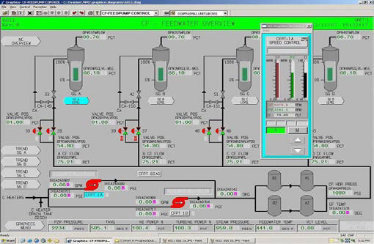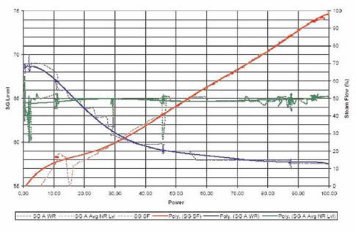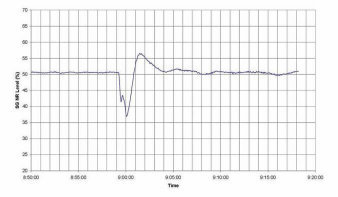Background
Since the late 1980s, industry data has consistently identified the feedwater system as one of the top two major system contributors to the number of automatic reactor trips, with poor feedwater control as a significant root cause. In response, Westinghouse has provided leading feedwater control upgrade technology as the basis for numerous retrofits currently operating in dozens of nuclear units worldwide, dating back to its first wave of digital upgrades in the late 1980s that initially utilized the WDPF® Instrumentation and Control (I&C) platform.
Westinghouse’s current standard design, an evolutionary “lessons learned” design now in its third generation, includes an enhanced control algorithm/logic implemented upon the widely-used Ovation® digital I&C platform (successor to WDPF). It is capable of fitting into existing plant process control cabinets either as a stand-alone upgrade, or in combination with broader nuclear steam supply system (NSSS) retrofit applications. This common reference design is provided for both pressurized water reactor and boiling water reactor retrofit applications, and also for AP1000® nuclear reactor new-build, thereby maintaining and extending this well-established user base.
Description
The Westinghouse digital feedwater control system upgrade’s primary function is to regulate the flow of feedwater during normal at-power operations, and optionally during plant heat up/cooldown.
The control algorithm/logic features:
- Automatic input signal validation (one to four inputs)
- Low-power (single-element with feed forward) and high-power mode (three-element) with auto transition
- Gain scheduling to address process response variations over range of operation
- Compensation to offset limit-cycle behavior near steady-state due to field device non-linearities
- Automatic staging of feed regulator control valve and pump operation
- Integrated main feedwater pump speed control demand (variable speed pumps only)
The I&C platform features:
- Controller anti-windup
- Bumpless transfer
- Complementary contact input checking
- Alarming of system and process faults
- Manual control backup to redundant processors from manual/automatic station interface
- Degraded backup modes for fault tolerance driven by signal validation
- Redundant architecture with automatic fail over (controllers, input/output, power supply)
- Continuous online self-diagnostics and alarming
Benefits

- Fault tolerance within control algorithm logic and I&C platform
- Automatic control over the complete range of normal power operation (1 – 100 percent) and optionally during plant heat up/cooldown
- Operational flexibility through support of split range and mixed-mode operation (auto/manual) with seamless transition between feedwater regulation control devices
- Automatic integrated control of variable-speed main feedwater pump demand (as applicable) to maintain feedwater regulator valves within a reasonable operating range
- Ability to handle operational maneuvers with reduced water level deviation from reference:
- – Transition from auxiliary/startup feedwater to main feedwater system
- – Flow disturbances due to transitioning pumps into/out of service, changes in feedwater system recirculation, etc.
- – Turbine synchronization
- – Rapid ramp load increases/decreases
- Ability to address demands of process characteristics with reduced impact to control stability and performance due to:
- – Shrink/swell water level behavior, particularly for low-power operation
- – Process and control device non-linearities (e.g., pump/valve characteristics)
- Plant-specific dynamic analysis prior to operation to minimize field tuning at startup
Experience

Power Ascension

Loss of Feedwater Pump
Feedback from industry forums confirms a growing recognition of the value of original equipment manufacturer experience in support of digital nuclear I&C upgrade projects. Numerous lessons-learned reflect the need for vendor cognizance of plant operational performance demands, and design considerations unique to the nuclear industry. These highlight values of characteristic importance: risk aversion, reliability and confidence based upon demonstrated, evolutionary advancement. These values are firmly reflected in the standardized Westinghouse I&C upgrade product offerings, and the standardized design and test process employed for Westinghouse’s digital I&C upgrades.
AP1000 is a trademark or registered trademark of Westinghouse Electric Company LLC, its affiliates and/or its subsidiaries in the United States of America and may be registered in other countries throughout the world. All rights reserved. Unauthorized use is strictly prohibited. Other names may be trademarks of their respective owners.
Ovation and WDPF are trademarks or registered trademarks of Emerson Process Management. Other names may be trademarks of their respective owners.




